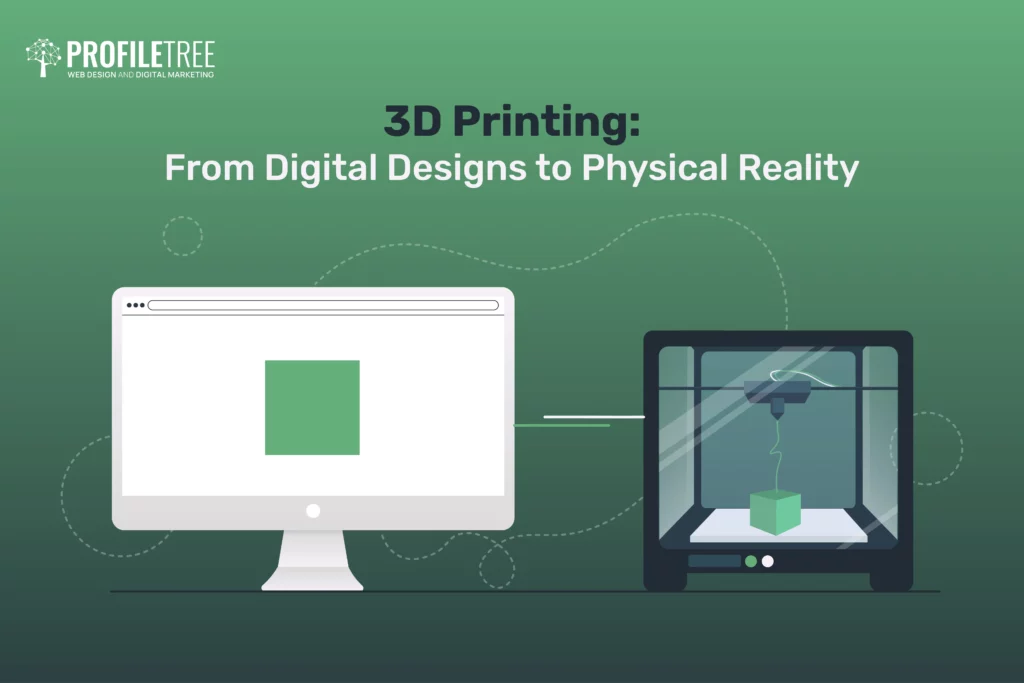Before you take a look at this article you may want to familiarise yourself with Digital Transformation, or check out other blogs on Business Strategy tools such as Scenario Planning and Porter’s Five Force Analysis.
What is Digital Transformation?
In its simplest terms, Digital Transformation is the implementation of a software system to radically improve how you operate and deliver value to customers. Sounds easy doesn’t it? Well how come so many businesses are failing when it comes to implementing Digital Transformation within their business today…Lucky for you we have the answer.
At ProfileTree we have carried out extensive research into the literature of Digital Transformation, gathering feedback to get a better understanding of why these transformation initiatives fail from both a business and academia perspective.
Therefore, before considering the 5 reasons for failure, let’s take a look at the meaning of Digital Transformation and where it comes from, as understanding the term itself will provide you with a starting point on understanding the key concept which companies and business leaders are missing out when it comes to implementing this process effectively, and why 70% of Digital Transformation initiatives are currently leading to failure.
The difference between Digital Transformation, Digitalisation, Digitisation
Let’s take a quick look at the discussion on the various definitions which have been discovered while researching this particular concept.

Despite the concept of three terms, Digital Transformation, Digitalisation, Digitisation sharing some similarities, they are very much different from each other with theory suggesting that a lack of understanding and clarity of the definition to each term as the biggest part to why organisation’ transformations fail. It is therefore necessary to understand what differentiates themselves from each other.
Digitalization Explained
Digitalization is seen to focus on the current status of a company and its digital development and use of ICT innovations, while taking into account both social and technical elements.
Digitization Explained
Digitization refers to the transformation of analogue information into digital format, as well as the development of digital infrastructure. An object of digitization is a technological process or artefact that possesses certain features, functionalities, and affordances.
Digital Transformation Explained
The definition of Digital Transformation is therefore more broad and considered as the process of organisational or societal change driven by ICT innovations and developments. In addition to affecting business models, processes, people, products, and organisational structures, Digital Transformation includes the ability to adopt technologies rapidly.
The diagram above has been inserted to show you as the term Digital Transformation has evolved and developed over time, it has moved away from a way of converting data of IT applications, into a more broad concept which covers all aspects of your business.
It is important to understand that if we can implement the process successfully, we as businesses can become more agile and innovative in our approach, while improving the company wide efficiency. Some pros and cons to the transformation of a business have been listed below.
Advantages of Digital Transformation
- Makes you more competitive
- Improves business efficiency
- Improves business productivity
- Delivers added value to your customers
Disadvantages of Digital Transformation
- Can take time
- Low rate of success
- Can have implications on employee satisfaction
Why do Digital Transformations fail?
From the research carried out at ProfileTree in understanding the risk element that is associated with digital and business transformation, the following 5 reasons for Digital Transformation failure has been selected.
1. Resistance to Change
One of the desired outcomes within a Digital Transformation process is regarding technology implementation, where our main aim is to either introduce a new software system or to replace an existing one. Although this is likely to have positive effects on both performance and productivity of the business, it may cause implications on certain individuals’ job roles.
Therefore, this is where we see resistance of change from employees. With the fear of technology replacing their job role, employees are likely to push against or resist the change within the business. Unless management has the plans in place to mitigate this risk or the correct communication levels in place to receive employees’ buy-in, it can become extremely difficult to manage this type of resistance.
2. Lack of a Clear Strategy and Vision
Those directing the Digital Transformation will play a crucial role to the development and growth of digital strategy where they must set out clear goals and objectives with an action plan on how these will be achieved.
There are many different strategic frameworks in which a business can follow, however ProfileTree have been working in collaboration with Ulster University representatives who have been providing support during an internal 2 year Digital Transformation project. As a result of this the following model has been developed by Dr John Bustard of Ulster University. This model is known as the EAS3EL Conceptual Model and it aims to offer planning, structuring and an informed strategic vision in which any type of company can follow.
For more information on the model and further context on its proposed use as an aid to Digital Transformation, please visit: https://pure.ulster.ac.uk/en/publications/the-art-of-digital-transformation-a-conceptual-paper-advocating-b
3. Lack of Talent and Skill Set to Implement Digital Transformation
Many businesses have a misconception around Digital Transformation, claiming it to be a simple IT or technological upgrade, and this is effectively where they fall behind or fail. Where they fail to consider the people and processes side of Digital Transformation, the people directing the process are not equipped with the correct skills and expertise to manage the process as a whole in line with achieving the desired outcomes.
Therefore, either requesting guidance and support from external providers or employing someone with the relevant skills and experience to guide you through this process is going to be essential.
4. Incorrect Company Culture
Businesses will want to align their culture with their Digital Transformation strategy. You want to ask yourself is your business capable of change? This may prove difficult for some businesses who aren’t as flexible and have been embedded with the existing ways of working for some time.
In addition to this, having a company which can harvest digital and technology is going to be important too. This is where adequate training and support becomes very important, where everyone must have a clear and transparent understanding of how to effectively use the new technology that’s being implemented. It may also be worthwhile creating incentives which encourages people to become embedded with a culture of innovation
5. Unrealistic Time Expectations
Businesses can set unrealistic time expectations when it comes to digital transformation where they think it will take only a couple of months to complete, when in fact it can take years. This therefore can lead to missed opportunities, a rushed initiative and a failure to achieve desired outcomes.
You will want to make sure you have carried out an internal analysis and you have a clear vision of what you want to achieve with a realistic time frame on how to get there.
How to avoid Digital Transformation failure – What to remember
When we consider the 5 points above, we can relate each of the points to businesses failure to recognise that although technology plays a critical role in digital transformation, without consideration of both your people and processes as well, you are setting yourself up for failure. Therefore, having a strategy which considers each of these areas will be key.
The following video has been created which goes into further depth on the topic of Digital Transformation.
Summary
That concludes today’s blog on the risks associated with digital transformation and reasons to why there is a high failure rate. We hope you have a better understanding of what needs to be in place while going through this process, however for more guidance don’t be afraid to contact ProfileTree today. More content like this can be found on ProfileTree’s Youtube. Thank you!



